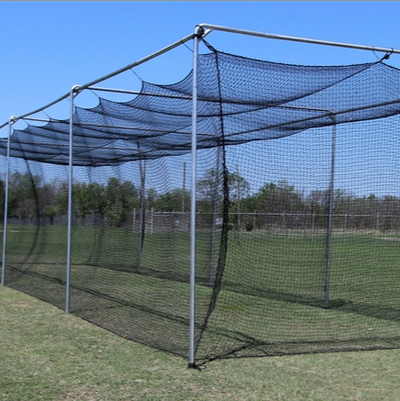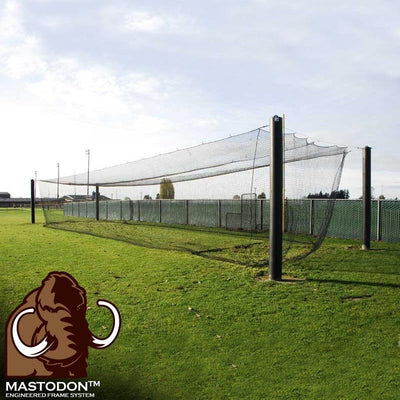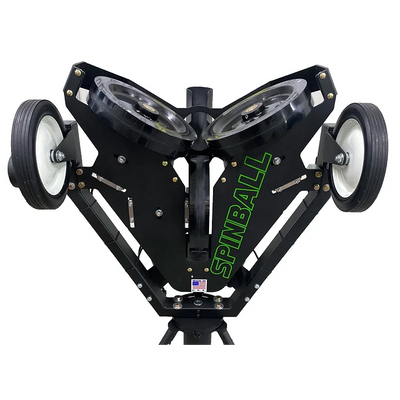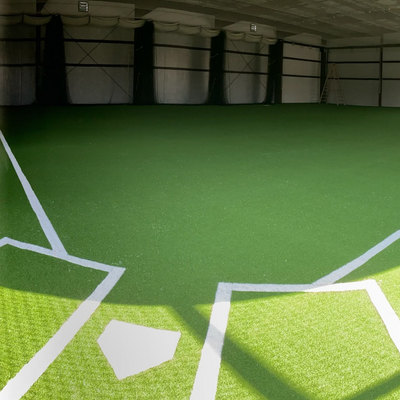Learn more about Coach Nemo and his Speed Hitting Program at www.speedbat.com
During my 22 years of coaching at the high school level, I always looked for that coveted “competitive edge” that all coaches tend to seek. If there was anything on the market that claimed it could help a player become a more capable hitter, I bought it. The trouble was that nothing I ever purchased ever did anything to address one of the most crucial issues in hitting - bat speed.
If there’s one thing that I learned in coaching, it’s that when all things are equal, the player with the greater speed is going to be the winner, especially when it comes to hitting the ball. In softball today, I’ve found it commonplace to see players in the on-deck circle clumsily swinging two or three bats at a time, often with one or more of them weighted with a doughnut. Why do we allow our players to do this? What is really going on here? What does this accomplish to prepare the player to step up to the plate and hit the ball? When I retired in 1998, I decided that I would answer these questions and, in doing so, challenge the conventional ways that coaches think about hitting preparation in terms of underload versus overload.
First, I asked the San Francisco Giants if I could work with one of their minor league teams during the summer months. They agreed, and I spent the next two years working with them using a variety of overloading techniques to try to increase the velocity of their swings. The results were that no one increased their bat speed. If anything, they started to get slower.
Next, I went to Taft High School in Lincoln City, Oregon, where I spent 10 to 15 minutes with their team every day using underloading techniques with lightweight bats and many repetitions. In just 12 days, the team showed an average increase in bat speed of five mph. To understand the full effect that five mph has on a player’s swing, consider this: for every two mph increase in bat speed, that gives the hitter the ability to hit the ball 20 to 25 ft. further. And that is not even addressing the issue of reaction time at the plate. What I didn’t realize at the time was that I wasn’t the only person doing this kind of research.
In an independent study, Dr. Frank Spaniel, a Certified Strength and Conditioning Specialist, and Dr. Coop De Renne found that if you want to increase bat speed, science suggests that you put the lead bat and the doughnut ring away. According to their findings, players should substitute bats weighing within 15 percent of their game bat. If players are swinging bats in conjunction with a strength training program, Spaniol and DeRenne found that regular underloading drills may prove to be the most effective means of improving their game bat speed.
Research conducted by Ray DeMarini, inventor of the famous DeMarini double-wall, found that the logic that traditionally drives bat-selection in both baseball and softball today is fundamentally wrong. In his experiments, DeMarini wanted to find out exactly what happens to bat speed at the point of contact. What he found is that the added mass of a heavier bat can result in an overall bat speed decrease of more than 50 percent when the bat hits the ball - the point where, according to DeMarini, players have to swing the hardest. These findings suggest that if players have a choice between swinging a light bat and a heavy bat, and they can swing them both at the same speed, they should choose the lighter bat because they will be able to maintain a faster bat speed through the point of impact, or the drive position, as it is commonly called among coaches.
Armed with the conclusions of Spaniol, DeRenne, DeMarini and my own, I submitted my finding to Dr. Ron Noebe, founder of B&N Softball/Baseball, which is a scientific lab devoted to finding the truths behind much of the hype that is now associated with the two sports. After reviewing my finding and conducting experiments of his own, Dr. Noebe concluded that swinging a lighter bat is more effective than swinging a heavier bat in developing fast twitch muscle fiber response, a crucial part of any athlete’s game performance.
The research has shown that the benefits of increasing bat speed go far beyond just adding distance to a player’s long ball. The hitters with high velocity are also able to wait longer before swinging, allowing them more time to see the ball, positively identify the pitch type and make a choice in a swing/no-swing situation. In other words, research shows that players with higher bat speeds not only are capable of hitting the ball further, but they also make solid contact more consistently and are better at selecting which pitches to hit.
Players can swing a heavy bat all day, but their bat speed will never increase. In almost all situations, the bat is too heavy to be swung fast enough for the repetitions needed to bring about the physiological changes to the muscle fiber, ultimately resulting in an increase in fast twitch muscle fiber reaction time.
When given this information, many coaches say that they simply don’t have the time during their practice schedules to add any more drills to their routine. With under-loading, however, all you have to do is conduct your regular drills, but substitute a player's regular bat for one that weighs approximately 15 percent less. This adjustment, however small, is all that is necessary to give your players the under-loading repetitions they need to increase their bat speed.
Coaches can use a variety of under-loading dry drills designed to break down the mechanics of the swing process and allow the players to take the swings necessary to develop fast twitch muscle fiber reaction time, which leads to increased bat speed. Coaches can also teach hitting mechanics in a speed circuit training format by simply substituting a lightweight bat for a regular bat. With this technique, your players will be taught correct mechanics while working on increasing their overall bat speed, a double-win for everyone involved. Under-loading techniques are also effective when used in multiple sets of short distance pitching and soft toss drills, which develop speed, timing, accuracy and power in the mechanics of the swing process.
The importance of adequate bat speed is undeniable. The sad truth is that players who do not have it will never make it far in the sport of softball. They may be excellent players in little league and even in high school, but when they get to the junior college or college level, they simply aren’t able to compete with other players.
Bat speed, ultimately, is the equalizer. In softball today, the pitchers are getting bigger, stronger and faster. Players have to either get faster or eliminate a part of their swing. Players with faster bats can wait longer, see the ball better, and make better decisions. They also have the reaction time they need to achieve contact with the ball. By working to increase their bat speed, players will improve their mechanics, hand-eye coordination and will be able to hit for greater distances.
In many cases in softball, the difference between winning and losing is a fraction of a second. It only makes sense to work to make your team faster, which puts that fraction of a second in your favor.
Learn more about Coach Nemo and his Speed Hitting Program at www.speedbat.com







